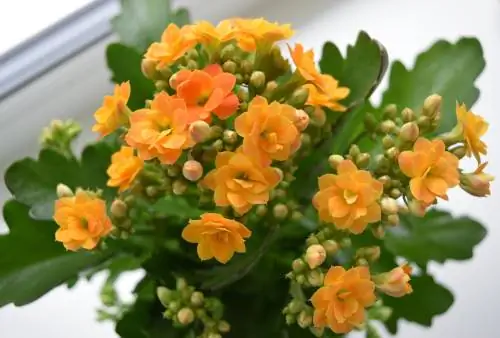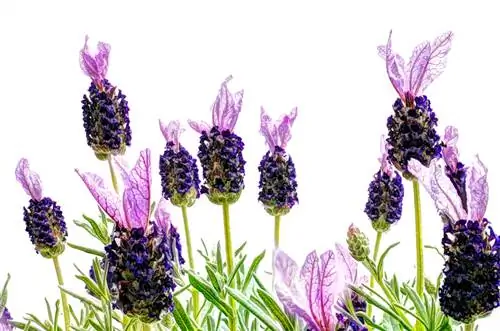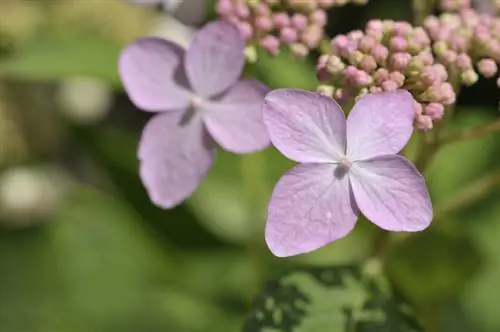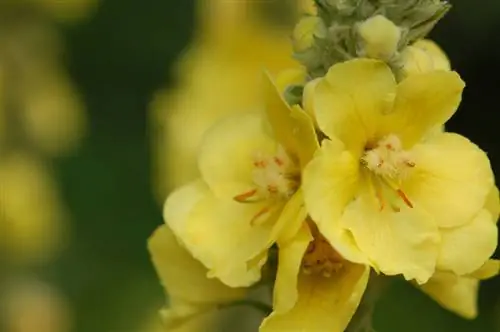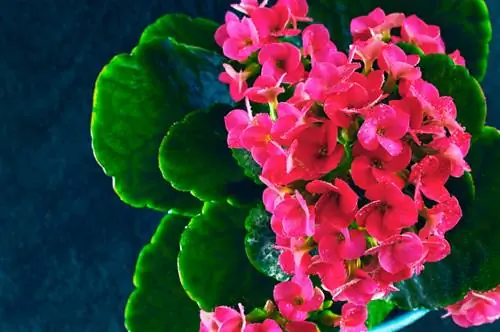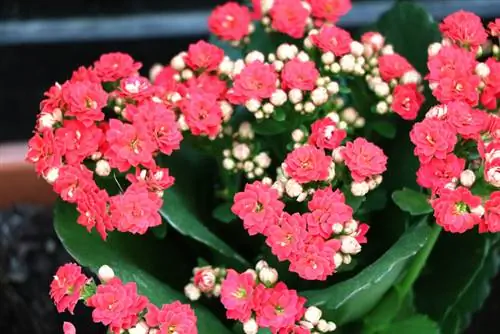- Author admin [email protected].
- Public 2023-12-16 16:46.
- Last modified 2025-01-23 11:22.
Exceptionally robust, the Flaming Käthchen is one of the most popular houseplants. It requires little attention and will bloom every year if cared for properly. Since the natural flowering period falls in winter, the Madagascar bell provides color on the windowsill at the exact time when other plants are hibernating.
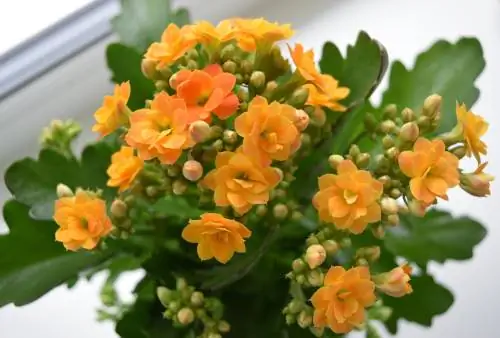
What are the care instructions for the Flaming Käthchen?
The Flaming Cat (Kalanchoe blossfeldiana) is a robust and popular houseplant that requires little care and blooms in winter. It prefers bright locations, should be watered with lime-free water and only needs occasional fertilizer. Diseases and pests are rare.
Plant profile:
- Botanical name: Kalanchoe blossfeldiana
- Order: Saxifragales (Saxifrages)
- Family: Thickleaf plants
- Genus: Kalanchoe
- Growth: Upright, bushy
- Growth height: Up to 50 centimeters
- Main flowering period: December to April
- Leaf: Thick, dark green, entire or notched
- Flower: Terminal
- Flower color: white, yellow to orange, pink to purple, red
Special features
The Flaming Käthchen is a short-day plant, so the flowering period falls in winter. Nevertheless, we offer it in bloom all year round.
Origin
The pretty houseplant comes from the tropical parts of Asia and Africa. It is particularly widespread in Madagascar.
Location and care
In its natural habitat, Flaming Käthchen thrives in full sun. That's why it feels very comfortable in a bright place on the windowsill. In the summer months you can cultivate the plant on the balcony and bring it back into the house before the first frosts.
Watering and fertilizing
Always water the Flaming Käthchen with lime-free water and only when the substrate feels completely dry. During flowering you should always water from below.
The very robust plant, however, reacts sensitively to waterlogging. Therefore, pour away any liquid that remains in the coaster after a while.
If you repot the succulent once a year, you don't have to fertilize the frugal plant. Otherwise, it is sufficient to apply a commercially available fertilizer every three weeks.
Remove dead flowers
Only pinch out individual, faded flowers carefully. This causes new buds to form from the panicles. These are only cut off when everything has bloomed.
Diseases and pests
The Kalanchoe is extremely robust, diseases and pest infestations hardly occur. However, the plant reacts quickly to too much moisture with root rot, so watering should be done carefully. If the humidity is too high, mildew occurs, which you can combat with a spray (€6.00 on Amazon) from a gardening store.
The Madagascar bell is rarely attacked by aphids and mites. You can take action against this using one of the known means.
Tip
The Kalanchoe can be propagated very well by cuttings. To do this, cut off he althy shoot tips about ten centimeters long and allow the cut surface to dry briefly. Then place them in a pot filled with a soil-sand mixture and water sparingly.

